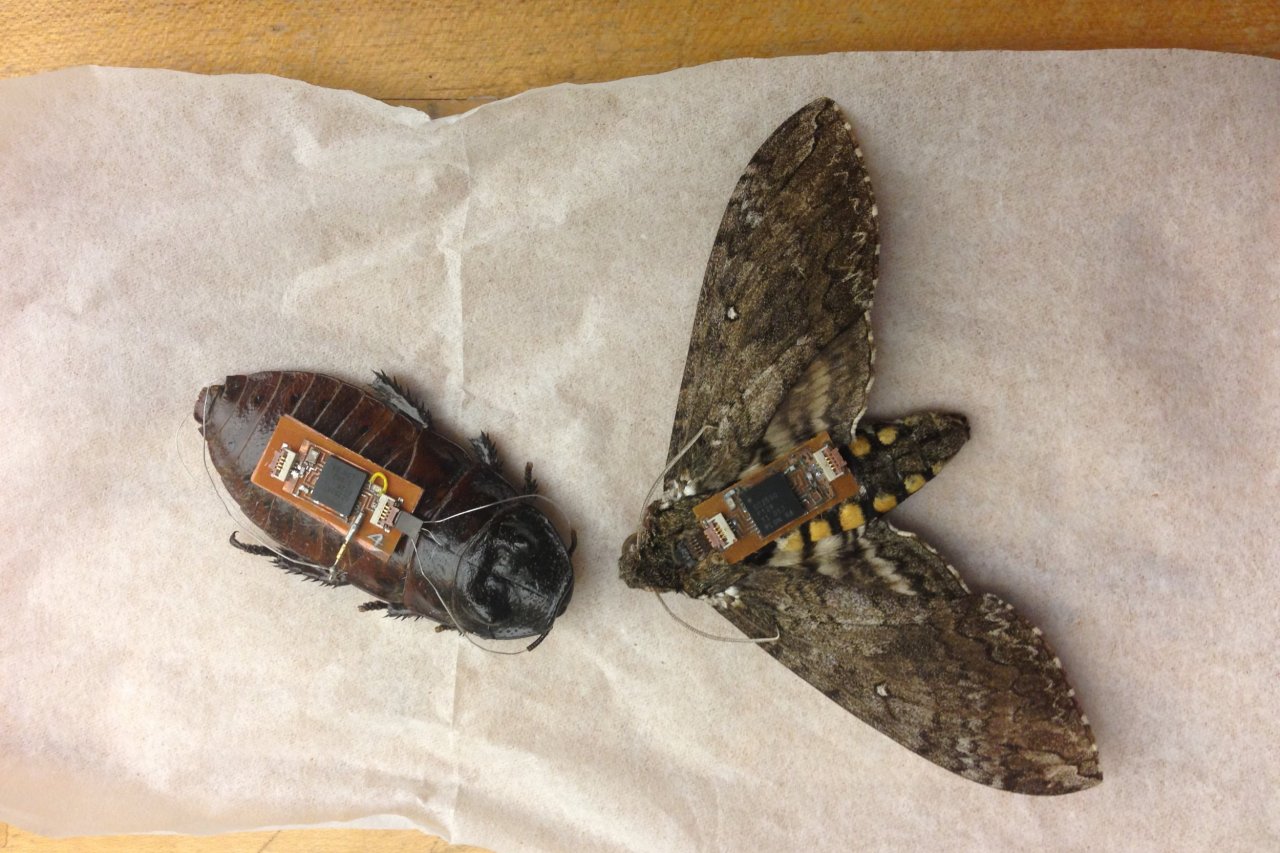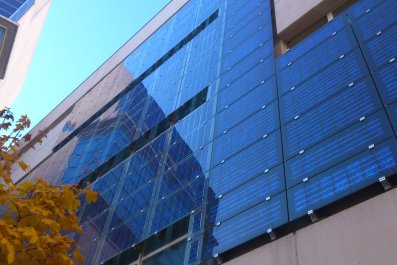Sinister cyborgs, part animal or human and part machine, have been a staple of science fiction for decades. We've had the Cybermen in Doctor Who, the Borg from Star Trek and of course Dr Julius No in the Bond film Dr No. But now scientists are developing something far less sinister – a moth.
At North Carolina State University (NCSU) in the US, they're developing tiny backpacks for moths that send electrical signals to the muscles controlling wings, allowing researchers to control the insects in flight. Thankfully, these borgs are not being developed for nefarious ends. Instead, the engineers involved in their development envisage a bunch of them fitted with tiny sensors flying above a disaster zone to search for survivors.
In research just published in the Journal of Visualised Experiments, the engineers at NCSU explain how they analyse the electrical signals controlling the flight muscles of the tobacco hornworm moth (Manduca sexta). The idea is that by understanding how the mechanism works, they will be able to implant electrodes into these muscles so moths can be controlled precisely in flight. "Controlling a moth in flight is challenging because it needs to carry a backpack, it's flying in a 3D space while it's manoeuvering and it's also balancing its weight in the air," says Alper Bozkurt, an assistant professor of electrical and computer engineering at NCSU.
So far, the NCSU researchers have succeeded in controlling moths suspended from tiny blimps purchased off the internet. The blimps were filled with just the right volume of helium to suspend the moths and their payloads in the air, making controlling their flight slightly simpler. But by learning more about the nervous control of moth wing flapping, the researchers hope to be able to dispense with the blimps so the moths can fly freely.
To investigate their neural flight-control systems, moths were placed inside a circular band of LED lights, so the lights filled their vision. "It's like an Imax 3D theatre for insects," says Bozkurt. Inside the LED ring, the moths were suspended on a platform that levitated thanks to electromagnets, allowing them to turn left or right. As the LED lights moved in the disk, the moths turned towards the light and the researchers monitored the muscles and electrical signals to them while they did this.
It sounds like a lot of trouble to go to. But while relatively large drones are now employed for everything from air strikes to aerial photography, developing flying machines the size of insects has proved a little more troublesome. "At the roughly 5-10cm scale, we have good examples of flying things," says Michel Maharbiz, an associate professor of engineering at University of California, Berkeley. "Below 5 cm there have been a few efforts, but they can't fly for long and their parts wear out."
The most high profile, and arguably the most advanced micro flying machine, is the RoboBee, developed at Harvard University. This bee-sized robot weighs less than a tenth of a gram and can lift off the ground and hover in mid-air while tethered to a power source. But it's likely to be a decade before RoboBee is advanced enough to be put to practical use.
"I love that research, please don't write as though I'm ragging on them," says Maharbiz. "But we have a way to go before we can take something as agile as a flying cockroach or grasshopper and send it into public environments to report back data."
Maharbiz made headlines in 2009 with his Darpa-funded remote-controlled flying beetle. Other cyborg insects have been developed too, such as cockroaches and even small flies. In part, the interest in tiny cyborgs has been driven by advances in smartphone tech. "Now we can squeeze a lot of function and information into a few millimetres square," says Bozkurt. It's also down to rapid advances in the technology of nerve and muscle stimulation, thanks to the likes of deep brain stimulation.
Some have questioned the ethics of electrically stimulating insects. "I sometimes get emails from people saying 'isn't it unethical to torture insects like this, inducing pain on them'," says Bozkurt. "As we perceive it, the concept of pain doesn't exist in insects because they don't have the necessary pain receptors and pain-related neural circuits. Our stimulation is at the level of microvolts. We're not zapping the insects."
Bozkurt has been working on remote-controlled cockroaches as well as his moths. "We have amazing control," he says. "We can draw a line and use a two-joystick controller to make the cockroaches follow it precisely." Next month, Bozkurt will start a U.S. Department of Energy-funded collaboration with Savannah River National Laboratory in South Carolina, investigating whether cockroach cyborgs can be sent into nuclear plants and nuclear research facilities to test for leaks.
His cyborg moths aren't too far off either. "In an environment like a nuclear plant, which is an enclosed space and where we can help the moth lift its payload, we can do that in one or two years," says Bozkurt. "But to get completely free flight of moths, we just need to miniaturise our backpack further and this is another five years."
So the cyborg moths and cockroaches will come along sooner than the entirely man-made miniature drones. We're playing catch-up with the natural world. "Yes, I think it's true, but there is nothing magical [about the way insects are engineered]," says Maharbiz. "It's just a question of working out what the principles are and designing systems that use them."
Maharbiz says that when we do start using synthetic insect-scale drones, they may not look anything like real insects. "Often when you study the principles and know how something works you are aware that there's a different way to use those principles. Those 747 Boeings don't flap their wings, right? So someone's figured out the underlying physics and said 'okay, look, there is a way we can use the physics'. So the coolest part of all of this is studying the insects to figure out what the hell they are doing and the fundamental principles at work."





























